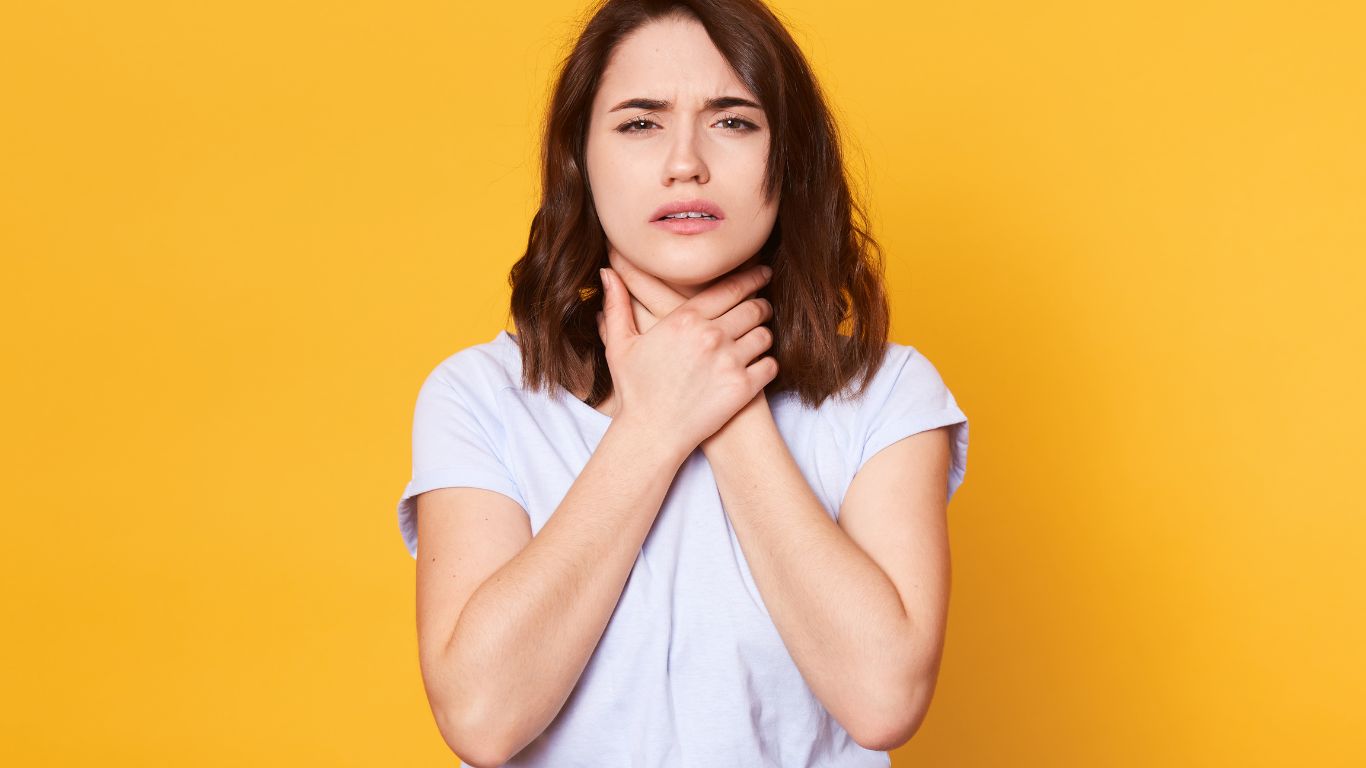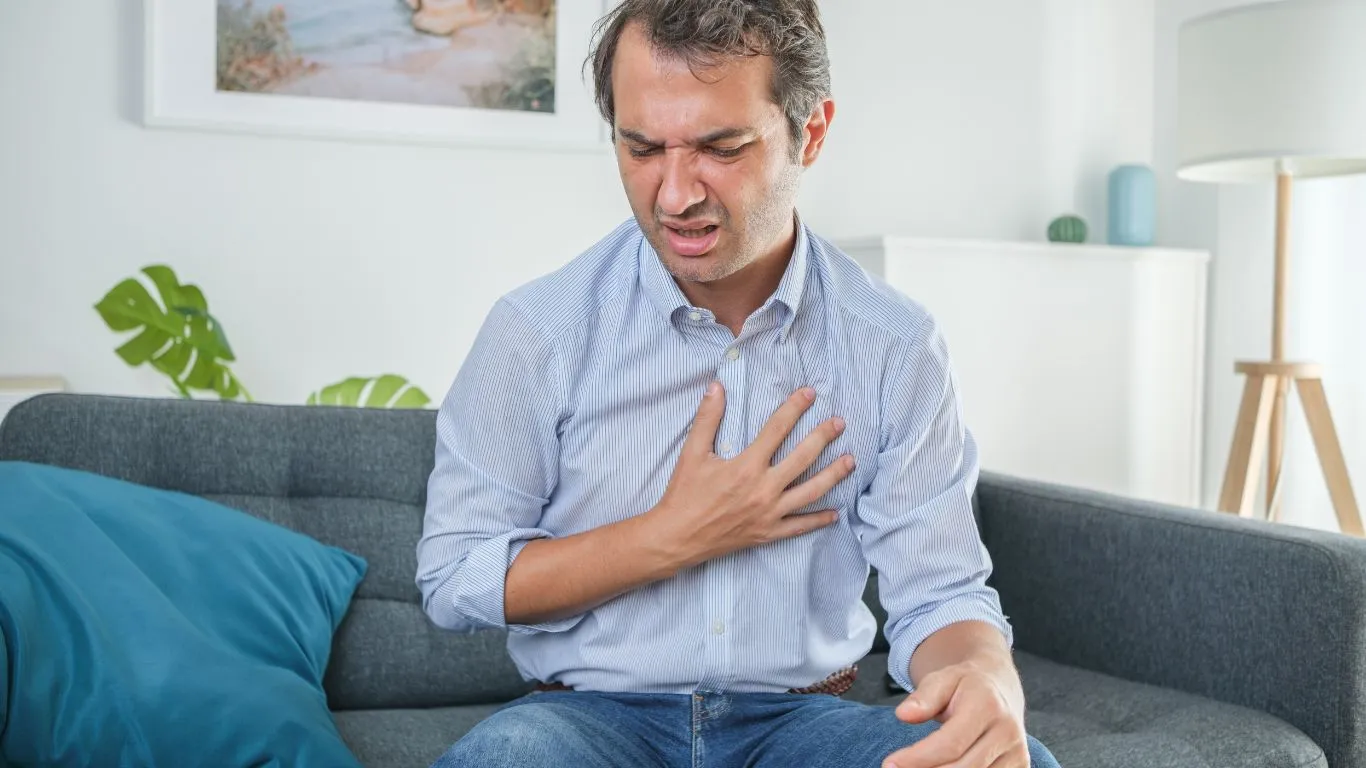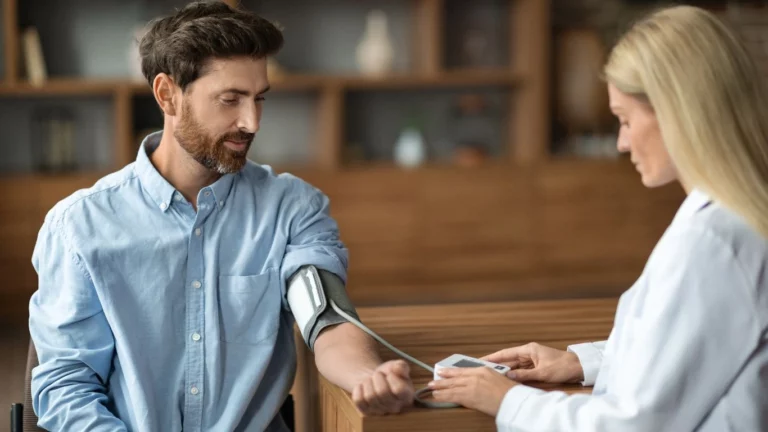Can Eating Smaller Meals Help GERD? Discover the Game-Changing Benefits
Can eating smaller meals help GERD? If you’re anything like me—working in a busy gastroenterology clinic, juggling between patient vitals and documentation—you’ve probably heard this question pop up a hundred times a week. I used to think it was just one of those generic diet suggestions doctors tossed around, but after seeing dozens of patients over the years, I realized: there’s a lot more to it. And trust me, those small changes? They can make a world of difference when it comes to easing GERD symptoms.
Understanding GERD: A Quick Refresher

GERD, or Gastroesophageal Reflux Disease, is more than just an annoying case of heartburn. It’s that stubborn burning sensation that just won’t quit, especially after a big meal. I’ve seen patients come in completely frustrated, saying they’ve tried everything from antacids to sleeping upright with a mountain of pillows. But still—relief feels like a pipe dream.
So what’s going on? Basically, GERD happens when stomach acid frequently flows back up into the esophagus. It’s not supposed to be there, and your esophagus lets you know it—loud and clear. That backwash (or reflux) can irritate the lining of your esophagus and cause all sorts of discomfort.
Here’s what I usually break down for my patients when we talk about it in the clinic:
- Heartburn: That classic chest-burning feeling, especially after eating or lying down.
- Regurgitation: Sour or bitter-tasting acid backing up into your throat or mouth.
- Trouble swallowing: Some even feel like there’s a lump in their throat.
- Chronic cough or hoarseness: A sneaky symptom that people don’t always connect to reflux.
How Does Meal Size Affect GERD?

This is where things get interesting. You’d be surprised how often the answer to “Can eating smaller meals help GERD?” is a resounding yes—at least from my experience and what I’ve seen in our clinic’s patient charts.
When you eat a big meal, your stomach stretches. That puts extra pressure on the lower esophageal sphincter (LES), which is the valve that’s supposed to keep acid in the stomach where it belongs. If that LES gets overwhelmed? Yep—you guessed it. Acid leaks up.
Think of it like this: You’re trying to close an overstuffed suitcase. No matter how hard you zip, something’s going to pop out. That’s kind of what’s happening inside your body after that second helping of spaghetti and garlic bread.
Why Smaller Meals Might Actually Be the Secret Weapon
Here’s what I usually tell patients: instead of three massive meals a day, try switching to five or six smaller ones. When you eat less per sitting, your stomach doesn’t get overloaded, and the pressure on your LES is much lower. That gives it a fighting chance to do its job properly.
Here are some of the reasons smaller, more frequent meals can make a difference:
- Less pressure = less reflux: Smaller meals mean the stomach isn’t under as much stress.
- More stable digestion: Your body has an easier time breaking down food in smaller quantities.
- Prevents overeating: When you’re not ravenous at mealtimes, you make better food choices.
I had one patient—let’s call him Dave—who swore he couldn’t survive without his mega burrito lunch. Every afternoon, he’d come in complaining of heartburn so bad it woke him up at night. After some convincing (and a couple of visual handouts), he agreed to cut that burrito in half and eat the rest later in the day. Two weeks later? Way fewer symptoms. He even joked that he felt “lighter and less like a fire-breathing dragon.”
Tips for Transitioning to Smaller Meals Without Feeling Hungry All Day

Changing how you eat can be just as hard—if not harder—than changing what you eat. I get it. You’ve got work, kids, life… and now you’re supposed to meal-prep and eat like a bird?
But here’s the deal: it’s not about eating less overall, it’s about spacing it out more evenly. You’re still giving your body all the fuel it needs—just in a smarter way.
Here’s what I recommend based on what I’ve seen work with real patients:
- Meal-prep in advance: Cook and portion out your meals ahead of time, especially on Sundays or your day off. That way, you’re not scrambling and end up overeating.
- Set reminders to eat: Sounds silly, but with busy schedules, people forget to eat—then binge. A gentle phone reminder keeps you on track.
- Focus on protein and fiber: These help you stay fuller longer, even in smaller amounts.
- Avoid high-fat, trigger-heavy meals: Fried foods, creamy sauces, and spicy dishes are known to provoke GERD. Keep them occasional.
One trick I picked up from a dietitian we work with: keep easy snacks like almonds, apple slices, or a small Greek yogurt on hand. Not only are they GERD-friendly, but they’re also quick to grab between patients or during a short break.
What to Eat When You’re Trying Smaller Meals for GERD

Now that we’ve covered how smaller meals can help with GERD, let’s talk about the food itself. It’s not just about portion control; it’s also about making sure that what you eat doesn’t trigger your symptoms. I can’t tell you how many patients I’ve worked with who did everything right with meal timing but still struggled because they were unknowingly eating GERD-triggering foods. Trust me—I’ve been there, too, during the early days of learning what works for my own digestive system. You can control your portion sizes, but if you’re eating foods that aggravate your reflux, you’re still going to feel the burn.
Foods That Are Typically GERD-Friendly
While every person’s GERD triggers are a little different, there are some foods that tend to be easier on the stomach for most people. These foods help reduce acid production, soothe inflammation, and keep that pesky acid from creeping up into your esophagus.
- Lean proteins: Chicken, turkey, and fish are excellent choices because they’re easy to digest and unlikely to trigger acid reflux. I usually recommend grilled or baked options rather than fried.
- Whole grains: Foods like oatmeal, brown rice, and quinoa are high in fiber and gentle on your stomach.
- Non-citrus fruits: Bananas, melons, and apples are typically safe bets. They’re soothing and don’t increase acid production.
- Vegetables: Most non-starchy vegetables are great—think leafy greens, cucumbers, zucchini, and carrots. Just avoid tomatoes, onions, and garlic, which are common GERD triggers.
- Low-fat dairy: Dairy can sometimes be a tricky subject, but in general, low-fat milk, yogurt, and cheese tend to be easier on the stomach.
But here’s the kicker: while these foods are typically safe, you still need to pay attention to how your body reacts. I once had a patient, Rachel, who swore by bananas to settle her stomach, only to realize that eating too many in one sitting actually made her symptoms worse! It’s all about balance and paying attention to your body’s signals.
How to Make Smaller Meals More Satisfying

I know, it can sound a little daunting—”Smaller meals? Isn’t that just going to leave me hungry all the time?” That’s a concern I hear a lot from my patients. And trust me, I get it! It’s tough to feel satisfied when you’re used to big portions. But let’s be real, you don’t need to be feeling stuffed to the brim after every meal to know that you’ve had enough.
The trick is to make those smaller meals count. When you’re eating less, you want to make sure you’re filling your plate with nutrient-dense foods that’ll keep you satisfied for hours.
Simple Strategies to Add More Satisfaction
- Increase fiber intake: Foods rich in fiber, like beans, lentils, and whole grains, help you feel fuller longer. Try adding a serving of beans to your salad or swapping white rice for brown rice.
- Include healthy fats: A small serving of avocado, olive oil, or nuts can give you that satisfying feeling without overloading your stomach.
- Hydrate well: Drinking enough water throughout the day can help curb hunger and prevent overeating later. Just be mindful not to drink too much during meals, as it can put pressure on your stomach.
One of my patients, Jake, used to say he felt like he was starving after lunch. He’d eat a tiny salad, but still get hungry soon after. We tweaked his meals to include some high-fiber vegetables like spinach and added a few nuts for healthy fats. Boom! That hunger pang went away, and he actually started feeling more energized.
The Timing of Meals: When to Eat for GERD Relief

It’s not just about what you eat; it’s also about when you eat. The timing of your meals plays a crucial role in managing GERD, and it’s something I’ve seen firsthand in the clinic with many patients. The problem isn’t just eating too much, but eating too late, especially before bed. I’ve had countless people tell me they eat their last big meal at 8 or 9 p.m. and wonder why their acid reflux flares up at night.
Eating too close to bedtime gives your stomach less time to empty before you lie down, which can increase your chances of reflux. So, here’s a simple rule I suggest to my patients:
- Finish meals at least 2-3 hours before lying down: This gives your stomach the time it needs to start digesting before gravity kicks in.
- Have a smaller evening snack: If you’re craving something later in the evening, opt for a light snack that’s GERD-friendly, like a small apple or a handful of almonds.
- Don’t skip breakfast: Eating breakfast helps stabilize your stomach acid levels and prevents you from getting too hungry later, which could cause you to overeat.
For instance, Karen—one of our regular patients—used to have dinner at 9 p.m. without fail. She tried the smaller meals thing, but her nighttime reflux wouldn’t go away. We worked on shifting her dinner time earlier in the evening, and sure enough, her symptoms became a lot less severe. Timing, it seems, really does matter!
Other Lifestyle Changes to Support GERD Management

So far, we’ve talked about the impact of smaller meals on GERD, what to eat, and how to time your meals. But GERD management isn’t just about food—it’s a lifestyle. I can’t tell you how many patients have shared their frustration after following a strict diet but still battling reflux symptoms. The thing is, GERD is often triggered by multiple factors—stress, sleep, and even physical habits like how we sit or stand. That’s where making a few simple lifestyle changes can be a game-changer.
Let’s dive into a few things I’ve seen work time and time again in the clinic, both in my patients and in my own experience.
Posture and Body Position: It’s More Important Than You Think
One of the first things I ask my patients about is how they’re sitting after meals. It sounds trivial, but I’ve seen so many people exacerbate their reflux by slouching or lounging right after eating. When you slump down or lay back, gravity is no longer your friend. Your stomach is more likely to release acid into your esophagus, and that’s exactly what we’re trying to avoid!
What I suggest to patients is simple: sit up straight for at least 30 minutes after eating. It doesn’t have to be military posture, but try to avoid slumping over or lying down. This small habit has made a massive difference for many of my patients.
- After meals, avoid reclining: Try taking a gentle walk if you feel the urge to rest. A 10-15 minute stroll after meals helps digestion and keeps things moving.
- Use a wedge pillow: If you’re prone to nighttime reflux, elevating the head of your bed by 6-8 inches can help gravity do its job while you sleep.
One patient, Emma, came in complaining of nighttime acid reflux that kept her awake. After a few tweaks—like sitting upright after dinner and using a wedge pillow at night—her symptoms improved dramatically. Sometimes, it’s not what you eat but when and how you position yourself that counts!
Managing Stress: A Crucial Piece of the GERD Puzzle

Another factor that often gets overlooked in GERD treatment is stress. As someone who’s seen firsthand the toll that chronic stress can take on your digestive system, I’m a firm believer that managing your stress levels is key. When you’re stressed, your body produces more stomach acid, which can contribute to GERD symptoms. Plus, stress affects how your body digests food—making it harder to keep everything running smoothly.
But here’s the good news: There are plenty of ways to tackle stress that don’t involve a prescription or therapy (although those are helpful, too!). I’ve suggested everything from simple breathing exercises to yoga and even something as simple as taking a 10-minute break during a busy day.
Practical Stress Management Tips
- Deep breathing exercises: Taking a few minutes to focus on your breath can do wonders for your body’s stress response. Try inhaling for a count of four, holding for four, and exhaling for a count of four.
- Mindfulness or meditation: Apps like Calm and Headspace make it easy to carve out time in your day to relax and center yourself.
- Regular physical activity: It doesn’t have to be intense—something as simple as a 30-minute walk can significantly reduce stress and help your body’s digestion.
For example, I had a patient named John who was dealing with a lot of workplace stress. His GERD had flared up so badly that it affected his sleep and productivity. He started taking short breaks throughout the day to go for walks, and by the end of the month, his acid reflux was far less frequent. The connection between the mind and body is so powerful—don’t underestimate the impact stress can have on your digestive health!
When to Seek Medical Advice for GERD
Now, I know we’ve covered a lot of ground here, and I’m sure you’re thinking, “Okay, Camellia, I’ve tried a bunch of these tips. But what if they don’t work?” While many patients see improvement by making dietary and lifestyle changes, GERD isn’t always something that can be controlled on your own. There are definitely times when professional help is necessary.
Here’s when it’s time to consult a healthcare provider:
- Persistent symptoms: If your heartburn or reflux symptoms persist despite trying lifestyle changes, it’s time to talk to a doctor.
- Frequent nighttime reflux: Waking up in the middle of the night due to acid reflux is a sign that the condition may need more intensive treatment.
- Difficulty swallowing: If you’re having trouble swallowing or feel like food is getting stuck, don’t ignore it.
- Unexplained weight loss: If you’re losing weight without trying, it’s important to get evaluated.
In those cases, your doctor may suggest prescription medications, or they might run tests like an upper endoscopy to check for damage to the esophagus. A combination of lifestyle changes and medical treatment can usually provide significant relief.
References
For more information on GERD, please check out the following resources:
Disclaimer
While this article provides general information about managing GERD through diet and lifestyle changes, it is not a substitute for professional medical advice. Always consult with your healthcare provider before making significant changes to your diet or lifestyle, especially if you have underlying health conditions.

Camellia Wulansari is a dedicated Medical Assistant at a local clinic and a passionate health writer at Healthusias.com. With years of hands-on experience in patient care and a deep interest in preventive medicine, she bridges the gap between clinical knowledge and accessible health information. Camellia specializes in writing about digestive health, chronic conditions like GERD and hypertension, respiratory issues, and autoimmune diseases, aiming to empower readers with practical, easy-to-understand insights. When she’s not assisting patients or writing, you’ll find her enjoying quiet mornings with coffee and a medical journal in hand—or jamming to her favorite metal band, Lamb of God.






